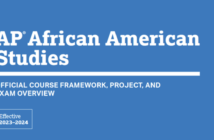The Article below was published in Vol. 136, Issue 8 of the Lake Forest College Stentor on April 30, 2021.
Emily Murrah ’21
Staff Writer
As the pandemic rages across the country, so too rage the concerns of citizens wanting us to get back to “normal” life. One of the greater issues on the country’s mind is the return to in-person learning. Despite the media’s attention on the subject, many educators still have mixed opinions on the way their voices are being represented. Educators from Shelby County Schools (SCS) in Memphis, Tennessee and professors from Lake Forest College offer valuable insight into how regional differences affect their opinions on the matter.
Lake Forest College Assistant Professor of History Rudi Batzell says that he was given the choice to teach either remotely or in-person for the 2020-2021 school year. Having opted for the remote choice, Batzell interviewed from his living room. As a professor, he says he experiences a higher degree of occupational flexibility that allows for choices like this. “Our students are adults, you know, there is just a different relationship here at the college level,” he states.
Batzell makes an important point: educators at different grade levels experience different outcomes. The same may be true for educators in different regions as well.
After spending over a year teaching remotely, SCS educators were told they had to return to the classroom mid-school year. Students were given the option to stay at home, but SCS teachers were not.
“The media only covered the reasons students needed to go back, not the reasons we were concerned,” says middle school art teacher Shannon Carpenter. She felt that the media had painted educators who wanted to teach from home as “lazy.” As an educator entering into her 15th year, Carpenter says she expected more respect in regard to her own health, especially considering COVID-19’s effect on the Memphis community.
According to the Memphis Commercial Appeal, fluctuating COVID-19 case counts are now increasing into the triple digits. This effect may be further exaggerated by the statistic that across the nation, African Americans are three times more likely to contract COVID-19, according to the University of Minnesota Center for Infectious Disease Research and Policy. Because SCS reports that 73 percent of students and 76 percent of teachers in SCS schools are African American, the concern for Memphis communities returning to schools is real. When comparing data side-by-side, these facts are hard to ignore.
“While it is in our nature as teachers to express concern for our students, we also have to worry for ourselves. The numbers are worrying to say the least, and they aren’t being reported in the ways that we are feeling them,” says Ryan Damek, an instructional leadership coach at Manassas High School in Memphis, Tennessee.
Batzell reminds us that context matters, especially when it comes to regional perspectives. When it came to the media’s representation of Chicago’s teachers in particular, Batzell felt that the strength of the Chicago Teachers’ Union (CTU) provided a path for the safe and effective return to in-person learning, and that this advocacy was clearly conveyed by the media to the public.
When referencing how he felt about the tone used by the media surrounding the CTU’s efforts, however, he voiced similar concerns to Memphis educators. “I was frustrated by the way unions were sort of unfairly demonized,” he says.
As restrictions loosen, the cost of gathering in classrooms still poses health risks for both children and their teachers as they gradually return to normal capacity. The numbers and the voices behind them may cause communities to stop and ask themselves: are we having the right conversations? The answer, it seems, may depend on regional opinion.


